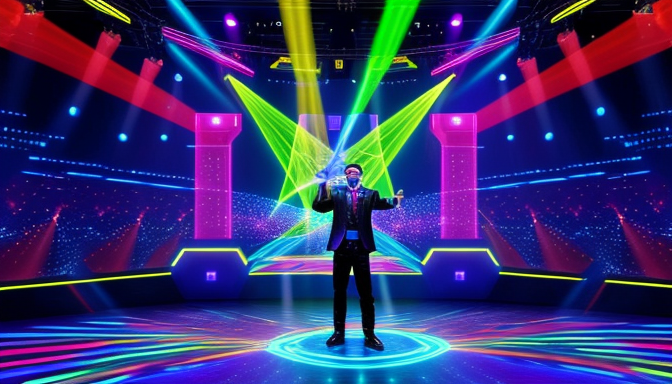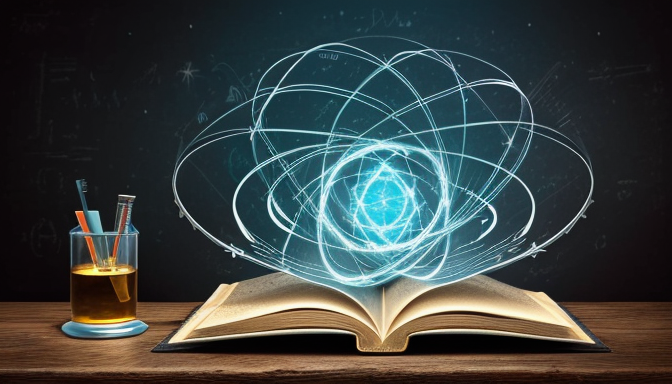Magic has always fascinated us, hasn’t it? From the enchanting tales of wizards casting spells in fantasy novels to the jaw-dropping tricks performed by street magicians, the allure of magic captivates our minds. But what if I told you that there’s a science behind this phenomenon? Understanding magic isn’t just about wands and potions; it’s about the intricate dance of psychology, perception, and technology that creates these mesmerizing experiences.
In fictional settings, magic can be classified into two broad categories: soft magic and hard magic. Soft magic systems often rely on vague rules and limitless possibilities, allowing authors to create a sense of wonder without strict limitations. Think of the whimsical spells in Harry Potter or the mystical forces in The Lord of the Rings. On the other hand, hard magic systems have defined rules and limitations, making the magic feel more structured and believable. A prime example is the Cosmere universe created by Brandon Sanderson, where the mechanics of magic are meticulously explained.
Moreover, the classification of spells can vary significantly across different arcane traditions. Some spells might focus on manipulation of elements, like fire and water, while others might delve into more abstract concepts, such as time or emotion. This diversity adds depth to the magical experience, making it not just a spectacle but a storytelling tool that enhances the narrative.
So, the next time you witness a magic trick or immerse yourself in a fantasy novel, remember that there’s a fascinating interplay of psychology and creativity at work. Magic, whether on stage or in stories, is a beautiful blend of science and art.
The Psychology of Illusion
Have you ever watched a magician pull a rabbit out of a hat and wondered, how do they do that? The answer lies in the fascinating world of psychology and illusion. Our brains are wired to perceive the world in a certain way, and magicians exploit these cognitive quirks to create moments of wonder. For instance, the concept of cognitive biases plays a significant role in how we interpret magical feats. When a magician performs a trick, they often guide our attention away from the method, leading us to focus solely on the outcome. This is known as misdirection, and it’s a powerful tool that can leave us questioning our own perception of reality.
Moreover, the psychology of illusion is not just about what we see; it’s also about what we feel. The thrill of surprise and the joy of disbelief are emotional responses that enhance our experience of magic. For example, when a magician makes a coin disappear, the audience’s reaction is often a mix of confusion and excitement, creating a memorable moment that lingers long after the show is over. This emotional engagement is crucial, as it transforms a simple trick into an unforgettable experience.
In fictional settings, the psychology of magic can be even more intricate. From soft magic systems, where the rules are vague and fluid, to hard magic systems, which have defined limits and structures, the way magic is perceived can vary greatly. Each system creates its own set of spell classifications and arcane traditions, shaping how audiences engage with the narrative. This interplay between perception and illusion is what makes magic not only a performance art but also a profound psychological experience.

The Role of Technology in Modern Magic
In today’s world, the line between magic and technology is becoming increasingly blurred. Have you ever watched a magician pull a rabbit out of a hat and wondered if it was all just a clever trick or something more? With the advent of modern technology, magicians are now able to create experiences that feel almost supernatural. From stunning visual effects to interactive performances, technology has taken magic to a whole new level.
For instance, consider the use of augmented reality (AR). This technology allows magicians to overlay digital images onto the real world, creating illusions that can leave audiences in awe. Imagine a magician making a virtual dragon appear in the middle of a crowded stage! These advancements not only enhance the visual spectacle but also engage the audience in ways that traditional magic could never achieve.
Moreover, the integration of smart devices has revolutionized how magic is performed. Magicians can now use apps to control props remotely, making it seem like they have powers beyond our understanding. This fusion of magic and technology has opened up new possibilities for storytelling and audience interaction.
In summary, technology is not just a tool for modern magicians; it is a catalyst that transforms ordinary performances into extraordinary experiences. As we continue to explore the intersection of science and magic, we may find that the true magic lies in the imagination and innovation that technology inspires.
Frequently Asked Questions
- Can magic really be explained by science?
Absolutely! While magic feels mystical, many tricks rely on psychological principles and cognitive biases. Understanding how our minds work can reveal the fascinating science behind the illusions.
- What role does technology play in modern magic?
Technology has revolutionized magic! From augmented reality to sophisticated gadgets, magicians now have tools that enhance their performances, making the impossible seem even more real.
- Why do we find magic so captivating?
Magic taps into our innate sense of wonder and curiosity. It’s like stepping into a storybook where the impossible becomes possible, making us question our reality and embrace the unexpected.
- Are there psychological tricks that magicians use?
Definitely! Magicians often exploit cognitive biases and perceptual tricks to misdirect our attention. This clever manipulation of our senses is what creates that ‘wow’ factor during performances.
- Can anyone learn magic?
Yes! With practice and dedication, anyone can learn magic. It’s all about understanding the techniques and putting in the effort to master the art of illusion.

Recent Comments